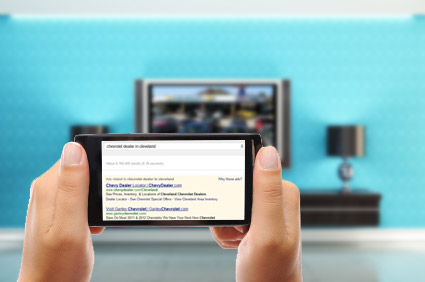Groundbreaking research about smart phone usage was unveiled at the Mobile Marketing Association conference last week by AOL and BBDO, uncovering patterns about the where-s and why-s of smart phone use that challenge the stereotypes. Turns out, mostly, mobile is NOT mobile and mostly, people do not have directed purpose but are chillaxin’ in a state we called “me-time”.
I am proud to have been the consultant on this groundbreaking research conducted by the firm InsightsNow.
With permission, I am reposting an abridged version of a blog post describing this research called “Seven Shades of Mobile” by Edwin Philogene VP, Director, Business Planning and Digital Strategy for BBDO. The full text of his blog can be found here.
What really drives consumers to use certain branded mobile apps or websites?
That is one of the key questions that brands and marketers are clamoring to answer as they pull together their strategies for attacking the immense opportunity that mobile represents for reaching and engaging today’s and tomorrow’s consumers.
It’s also one of the key questions that drove BBDO and AOL to join forces to undertake an unprecedented research study to better understand consumer behavior around the alway on, always on you smartphone.
The study was one of the most comprehensive of its kind. Conducted by research firm InsightsNow, it implemented a unique three-phase approach that looked at consumer usage of mobile from qualitative, quantitative and ethnographic perspectives. Smartphone users completed a seven-day diary, making video recordings throughout the day as they used their phones. This was followed by in-depth interviews and a survey conducted among 1,000 smartphone users from June to August, 2012. Arbitron Mobile Oy’s, a subsidiary of Arbitron Inc., Arbitron Mobile Trends Panels™ service was used to track a mobile panel for a 30-day period.
The result was a database of over 3,000 mobile interactions or moments. These moments (which excluded email, SMS and voice calls) were then segmented according to the underlying needs and motivations of the participants. By using this approach, the research was able to uncover which user needs are fulfilled by a surprisingly wide variety of mobile interactions.
The insights from the effort was unveiled this week, Advertising Week, in New York City by Christian Kugel, Vice President of Consumer Analytics and Research at AOL and Simon Bond, CMO of BBDO Worldwide in a presentation titled “Seven Shades of Mobile” representing the seven resulting mobile behavioral moment markets that the research realized.
And the insights were nothing less than eye-opening.
The research revealed that, although the overwhelming emphasis by mobile marketers up until now has been toward location-based marketing to reach the on-the-go consumer, 68% of consumer mobile phone use occurs in the home. This totally upends one of the most widely held myths about mobile marketing: that its main value is linked to reaching consumers on-the-move.
The research also uncovered other insights that shows there is untapped value for brands when they look beyond the conventional view of what consumers do on their smartphones.
Among the key findings:
- Mobile isn’t always on the go. In fact, well over half of all mobile interactions measured in the research occur in the home, challenging conventional wisdom.
- These mobile interactions can be segmented into seven distinct “mobile motivations” that encompass most mobile use. (see full blog post for a description of these markets)
- Me Time is by far the biggest “Mobile Motivation.” Me Time accounts for almost half (46%) of all smartphone app and website motivation, averaging 864 minutes per month per user, per Arbitron Mobile. Seventy percent of these moments are lean-back experiences.
- Mobile advertising performs poorly in Me Time on key ad effectiveness metrics. This is because the vast majority of messages are not relevant to the use at that time, are easy to ignore, or get in the way.
Based on these findings, AOL and BBDO have identified the following recommended actions to help marketers, agencies and brands improve their mobile interactions with consumers:
- Think about mobile as part of something bigger. Move beyond the conventional surface view of mobile behaviors to align your messaging with the underlying motivators that propel mobile interactions.
- Focus on “Me Time.” Think about ways you can redirect mobile communications to help users indulge and enjoy themselves.
- Recognize there are other mobile motivations. Targeting communications to capitalize on these motivators can increase engagement.
Moving forward, this effort lays new groundwork for marketers everywhere who are trying to capture the attention of mobile users.
“In the end, it’s all about helping agencies and creatives create the most compelling content. And based on our findings, that compelling content should be me-based, home-based, entertainment-based, not solely geo-location based,” said Simon Bond, BBDO’s Chief Marketing Officer.
Indeed, mobile isn’t always mobile.
Thanks to this effort, it’s a whole new world in the whole new world of mobile.

